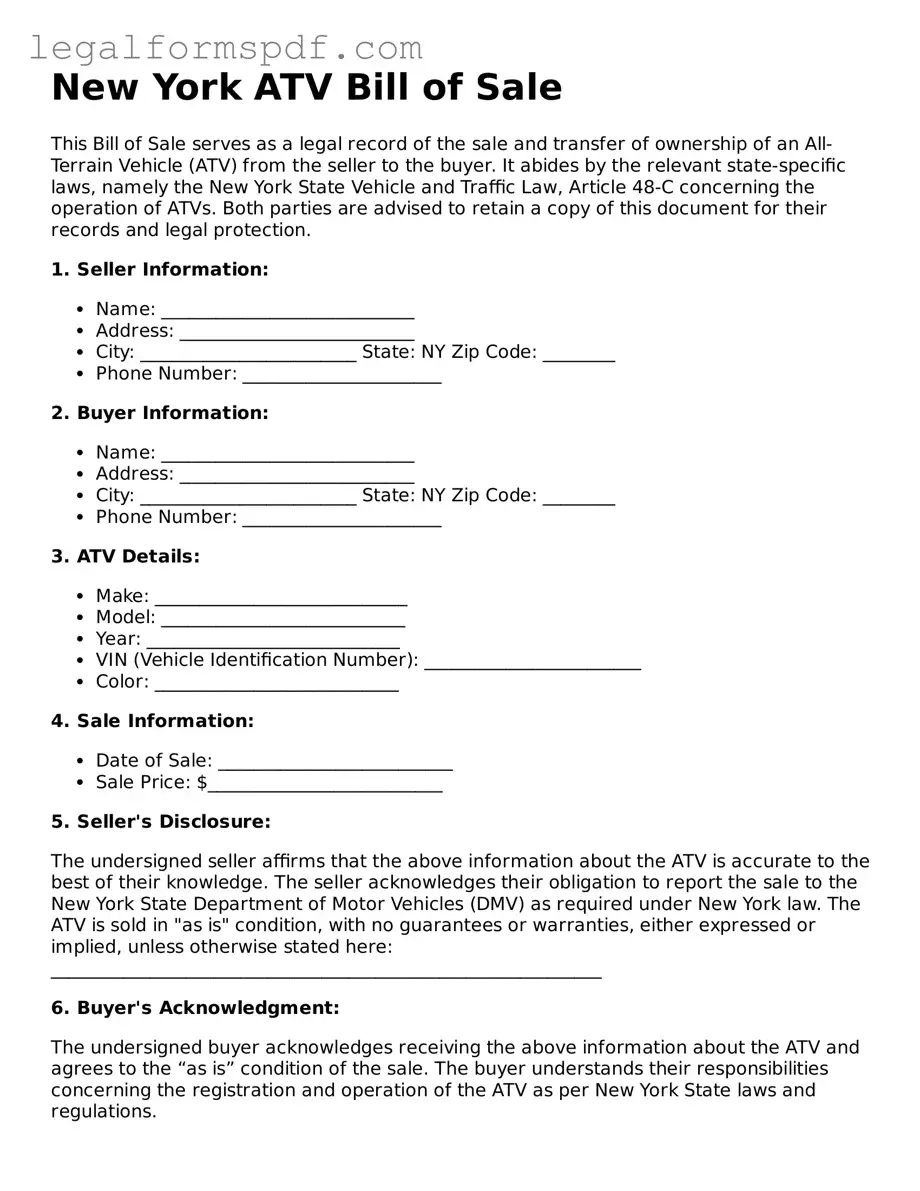What is an ATV Bill of Sale form in New York?
An ATV Bill of Sale form in New York is a legal document that records the sale and purchase of an All-Terrain Vehicle (ATV) within the state. It serves as proof of transaction between the buyer and the seller, detailing the ATV’s purchase price, make, model, year, and identification number, along with the personal information of both parties. This document is crucial for the legal transfer of ownership and may also be required for registration purposes.
Why do I need an ATV Bill of Sale in New York?
In New York, possessing an ATV Bill of Sale is necessary for a few reasons. Primarily, it formalizes the transaction, providing legal evidence that the sale occurred under agreed-upon terms. It protects both the buyer and the seller by documenting the change of ownership, which is essential for liability reasons. For the buyer, it's a required document for registering the ATV with the state. Without this form, the legal ownership transfer and subsequent registration processes can be significantly complicated.
What information should be included in a New York ATV Bill of Sale?
A comprehensive ATV Bill of Sale in New York should include specific details to ensure its validity. Essential information encompasses the seller’s and buyer’s full names and addresses, the sale date, and the total purchase price. The form should also detail the ATV’s make, model, year, VIN (Vehicle Identification Number), and any disclosures or warranties pertaining to its condition. Including a space for both parties to sign and date the document is also crucial.
Do both parties need to sign the New York ATV Bill of Sale?
Yes, for an ATV Bill of Sale to be legally binding in New York, both the buyer and the seller must sign the document. Their signatures affirm that the information provided is accurate and that they both agree to the terms of the sale. It’s advisable for both parties to keep a copy of the signed document for their records, as it serves as proof of ownership and transaction.
Is notarization required for an ATV Bill of Sale in New York?
While New York law does not explicitly require the notarization of an ATV Bill of Sale, having it notarized can add an extra layer of legal protection. Notarization ensures that the document is recognized as a legally executed and verifiable contract, minimizing future disputes by confirming the authenticity of the signatures. However, it’s not mandatory for the document to be effective legally.
What should I do after completing the ATV Bill of Sale?
After completing the ATV Bill of Sale, the next steps involve several key actions to ensure everything is legally in order. The buyer should submit the signed Bill of Sale to the appropriate state department as part of the ATV registration process in New York. Additionally, both the buyer and the seller should keep copies of the Bill of Sale for their records. It's also wise for the buyer to check if there are other requirements or forms needed for registration or use of the ATV in New York, such as insurance documentation or safety certificates.
